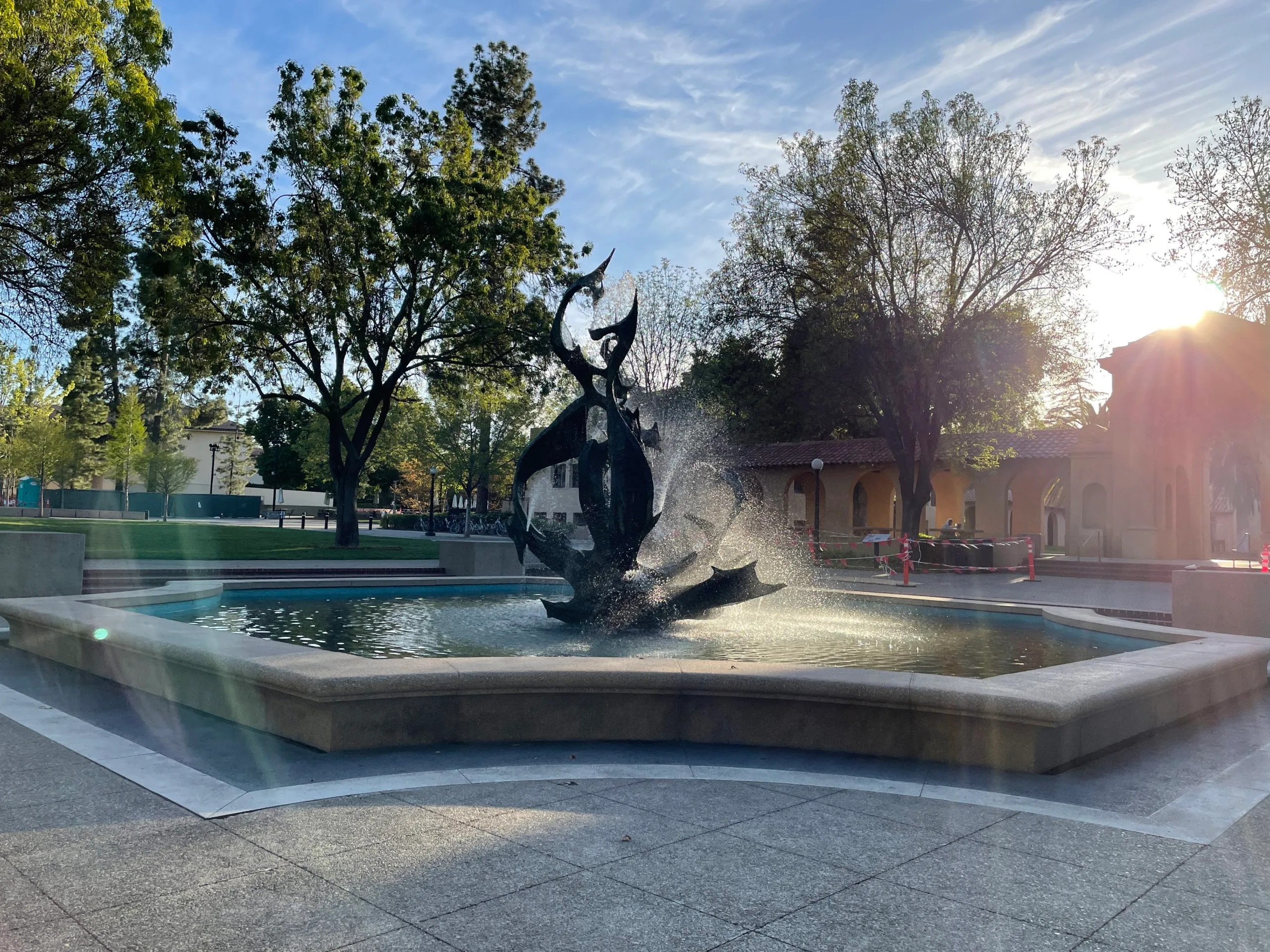For most of the Class of 2024, there were no tearful goodbyes to parents or first-time fountain hopping excursions last September.
Instead, fall quarter took place within the confines of home, where computer cables cluttered childhood bedrooms and GroupMe became the new hub for Stanford social life, or in Airbnb rentals, scattered across the country.
Then there is Caterina Zampa ’24, whose entire first year has been spent living at Stanford — 5,852 miles from home.
Zampa’s status as an international student from Switzerland made her eligible for a coveted spot as one of 1,500 undergraduates approved to live on campus this academic year. Among those ranks are students on athletic teams and those with approved special circumstances.
Within that subset is an even smaller number of students who, like Zampa, have lived on campus for three quarters now. After living in the Escondido Village Graduate Residences (EVGR) in the fall, first-year students have been moved to dorms across campus, giving them front-row seats to watch the Farm come back to life.
In the fall, social life “all seemed kind of imaginary, but [in spring] everything is starting to feel real,” Zampa said in an interview, seated outside the Coupa Cafe with a hummus veggie wrap in hand from what has already become one of her go-to campus dining spots.
She was joined by Michelle Vinocour ’24, a student from Costa Rica. Friends since the fall, the pair has seen a desolate campus transformed in recent weeks by the arrival of 1,300 juniors and seniors and the sight of vaccinated faculty and staff venturing out more.
“Campus doesn’t feel so lonely now,” Vinocour said, with lunchtime chatter and booming laughter in the distance. Games of spikeball on Wilbur Field and study groups perched between archways make the campus feel “normal,” added Zampa, a dynamic that she said first-year students have had little experience with this past year.
Even casual gatherings, like this Tuesday lunch between friends, were not always permitted. The Campus Compact, an agreement all residents had to sign, represents the University’s attempt to corral student gatherings and keep the coronavirus in check. At the start of fall, the Compact required students to isolate in their rooms. By the end of the quarter, students were permitted to socialize unmasked in groups of up to eight, under the watchful eyes of the Compact Review Panel, a collection of students, faculty and staff with the power to penalize violators.
Despite the University encouraging students to report protocol violations, Landon Watson ’24 said he sees the Compact as “unenforceable.”
“It’s wishy washy,” he said, “and it depends on who catches you.”
Watson said he knows several students who have been “compacted,” forced to appear before faculty and tasked with designing COVID-safe social activities. To date, however, no student has been removed from the Stanford campus for Compact violations.
Rather than the “prison” he said he expected upon arrival in the fall, Watson agreed with Vinocour and Zampa that life on campus has been a source of academic and social support. Alongside friend and fellow Roble resident Nahome Hagos ’24, Watson said that he found a core group of friends with whom to study and socialize. He added that he and Hagos blow off steam from their pre-med course load with games of basketball and poker.
For international students, federal regulations require enrollment in at least one in-person class — a requirement Vinocour and Zampa fulfill with a computer science section on the McMurtry green. At Stanford, Vinocour said she pores over problem sets and walks to her class with friends. If she were at home, with no other Costa Rican Stanford students to commiserate with, she would have navigated classes alone.
For Zampa, the nine-hour time difference between California and Switzerland would have turned a 4:30 p.m. section into a 1:30 a.m. meeting. Late-night Zoom socials would have had her up bright and early, uprooting her routines and creating havoc with her sleep schedule.
Compared with their peers, students on campus say they are less reliant on social media for social interaction. After he moved to campus in September, Hagos traded in frosh group chats for dorm dinners and outdoor study groups. Watson, a light social media user to begin with, said he understands online connection is “crucial” for his generation, especially for those stuck at home. “I’ve learned I like to meet people in person first,” he said.
Come next fall, as sophomores, Hagos, Watson, Vinocour and Zampa will have a leg up on most of their peers when it comes to campus familiarity. Watson believes it may be difficult for newcomers to feel as at home as he does.
“Some of us feel like we’ve already gone through our freshman year,” he said. “The newcomers will definitely be a year behind.”
Hagos, Watson and Zampa all plan to pursue research opportunities this summer, extending their stay on campus for yet another quarter. As an international student, Zampa must stay in the country to maintain research funding,a caveat that bars her from a summer vacation at home. Vinocour plans to fly back to Costa Rica to visit family and friends before she returns in the fall.
Hagos said he feels he has found his group but looks forward to meeting more classmates in the fall. He added that he hopes vaccinations and a relaxed Campus Compact will finally allow the Class of 2024 to enjoy something closer to the traditional college experience.
“I was lucky,” he said, acknowledging that most frosh have only virtual connections to count on for the upcoming autumn quarter. “I came here just to find a quiet place to study. Life on campus definitely exceeded my expectations.”
